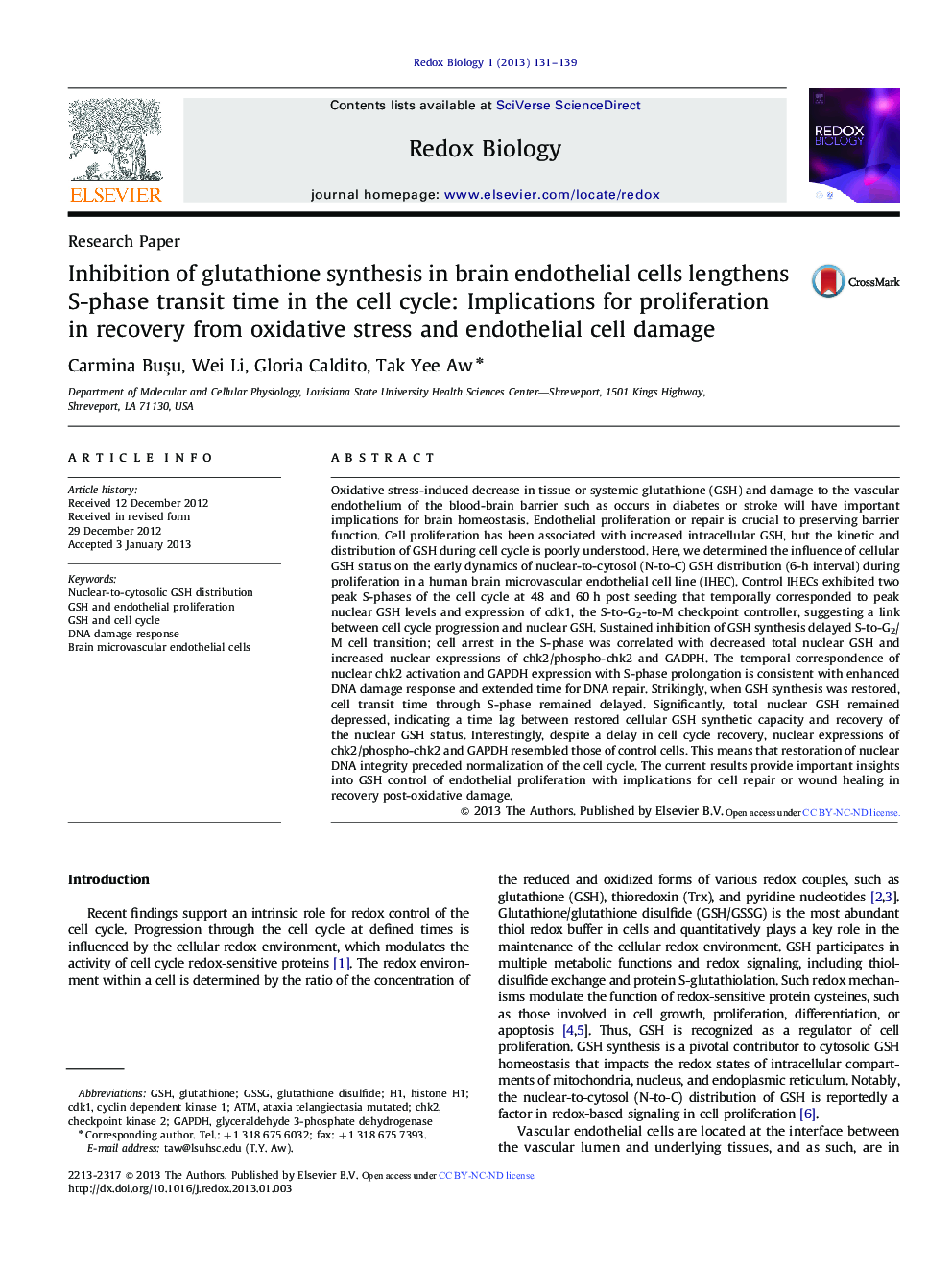| کد مقاله | کد نشریه | سال انتشار | مقاله انگلیسی | نسخه تمام متن |
|---|---|---|---|---|
| 1923240 | 1048882 | 2013 | 9 صفحه PDF | دانلود رایگان |

Oxidative stress-induced decrease in tissue or systemic glutathione (GSH) and damage to the vascular endothelium of the blood-brain barrier such as occurs in diabetes or stroke will have important implications for brain homeostasis. Endothelial proliferation or repair is crucial to preserving barrier function. Cell proliferation has been associated with increased intracellular GSH, but the kinetic and distribution of GSH during cell cycle is poorly understood. Here, we determined the influence of cellular GSH status on the early dynamics of nuclear-to-cytosol (N-to-C) GSH distribution (6-h interval) during proliferation in a human brain microvascular endothelial cell line (IHEC). Control IHECs exhibited two peak S-phases of the cell cycle at 48 and 60 h post seeding that temporally corresponded to peak nuclear GSH levels and expression of cdk1, the S-to-G2-to-M checkpoint controller, suggesting a link between cell cycle progression and nuclear GSH. Sustained inhibition of GSH synthesis delayed S-to-G2/M cell transition; cell arrest in the S-phase was correlated with decreased total nuclear GSH and increased nuclear expressions of chk2/phospho-chk2 and GADPH. The temporal correspondence of nuclear chk2 activation and GAPDH expression with S-phase prolongation is consistent with enhanced DNA damage response and extended time for DNA repair. Strikingly, when GSH synthesis was restored, cell transit time through S-phase remained delayed. Significantly, total nuclear GSH remained depressed, indicating a time lag between restored cellular GSH synthetic capacity and recovery of the nuclear GSH status. Interestingly, despite a delay in cell cycle recovery, nuclear expressions of chk2/phospho-chk2 and GAPDH resembled those of control cells. This means that restoration of nuclear DNA integrity preceded normalization of the cell cycle. The current results provide important insights into GSH control of endothelial proliferation with implications for cell repair or wound healing in recovery post-oxidative damage.
Figure optionsDownload as PowerPoint slideHighlights
► Increased nuclear-to-cytosol GSH was associated with brain endothelial cell (IHEC) cell cycle progression.
► Inhibition of GSH synthesis decreased nuclear GSH and delayed S-to-G2 transition.
► S-phase prolongation was linked to elevated DNA damage response.
► Recovery of nuclear GSH and normal cell cycle lagged behind the restoration of GSH synthesis.
Journal: Redox Biology - Volume 1, Issue 1, 2013, Pages 131–139